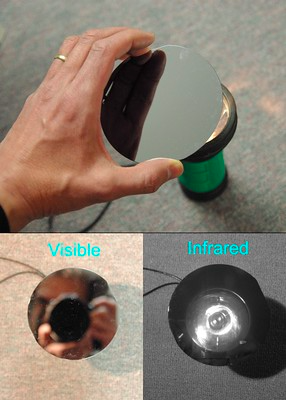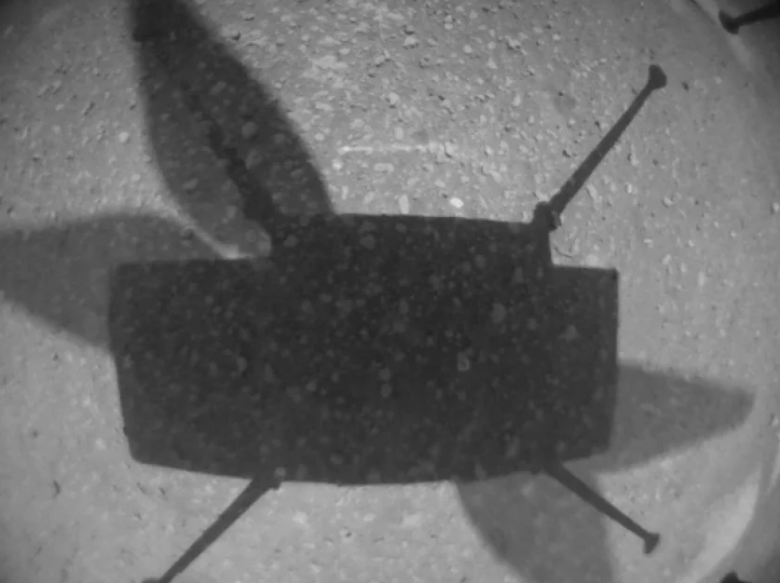I believe I got the answer.
Let's check this explanation:
it's unintentional and an artifact of how the sensor works. Basically it still works as a much lower performance image sensor after the shutter is closed but before the stored pixel data is scanned out. Essentially photoelectrons can still get into the storage node.
https://mobile.twitter.com/sdamico/status/1384221915422724096
So the light leaks to the pixel during readout. In extremely low rate compared with exposure time, but exposure time is about 100us, which is 100 times smaller than 10ms of readout.
(You can estimate exposure time by the angle of smearing in blade shadow. Readout time can be estimated by maximum FPS - 100fps gives 10ms for frame)
Can we reproduce that effect?
Luckily, I found a the video where exactly same camera filming small propeller under the bright light:

You can pause video and use < > buttons to navigate frame-by-frame and observe exactly the same translucency.
Also this post https://www.raspberrypi.org/forums/viewtopic.php?t=267563 by the same author, shows still image of the blades with prominent translucent circle:

Note that effect is much more prominent here. I believe thats because:
a) White propeller and dark background gives higher contrast
b) Exposure time was 4 times shorter (0x04 in the video, 0x01 in the forum post) which makes readout/exposure relation 4 times larger.
UPD 21 Jul 2021: Infrared disclaimer
It seems that I was wrong assuming that Ingenuity navigation camera
works in IR. OV7251 can work in IR and it's funny little pdf
says about "integral 850 nm bandpass filter" (from which I was thought
that it has only IR-vesrion). But as it turns out that there are
different versions for IR and visible-light-only. And now I can't find
any proofs that Ingenuity is indeed using IR version. But IR part
still seems plausible for other cases, so I won't delete it.
I also think that effect is more prominent with infrared light, because silicon (from which sensor is made) kinda translucent in IR.
 (https://www.flickr.com/photos/imager/3380554807)
(https://www.flickr.com/photos/imager/3380554807)
Thus make it easier to scatter around and reach storage nodes:

It can explain why amount of effect for Ingenuity and for video looks the same, despite that readout/exposure is much higher for video (I've estimate exposure in order of 10us): in video some LED was used for lighting, and LED has orders of magnitude less IR than the sun.




